Sawubona!
To be honest, Julie and I didn’t speak much Zulu before flying into Durban to start the African leg of our Follow the Sun journey. I mean, realistically, how often do you get to use Zulu in every day life? But in Durban, the largest city of the Kwa-Zulu Natal province of South Africa, most of the locals are Zulu and English comes a distant second. Never mind, we jumped into our fourth continent and 43rd country of this journey with great excitement and anticipation. Africa at last! Sawubona, as the locals say!
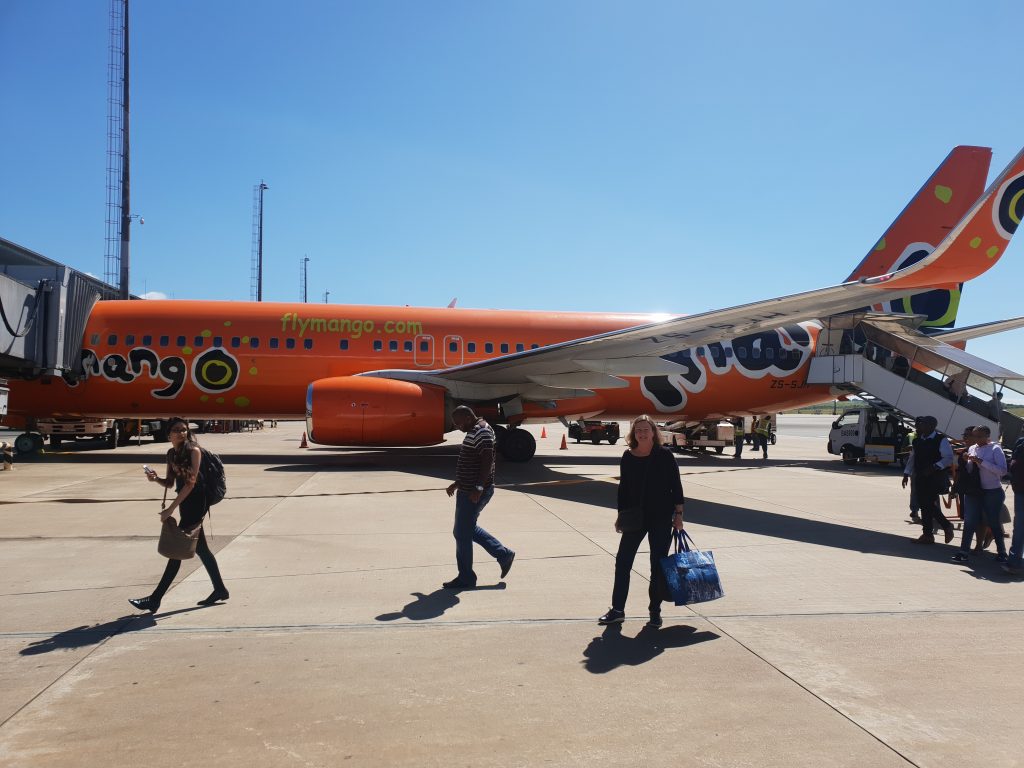
Mango Airlines took us from Johannesburg to Durban and became our favourite airline because of its name and colour
But it wasn’t easy for Julie, Tramp and I to meet up again in Durban. For Tramp it involved a 24 day ride in the bowels of the Hoegh Tracer, a vehicle container ship that transported him from Southampton England to Durban. For us it was a series of delayed flights, missed connections, extra hotel nights and added costs before we finally reached Durban and started the process of extracting Tramp from the firm grasps of South African port authorities and Customs inspectors. After three frustrating days we finally set him free and drove out of the port.
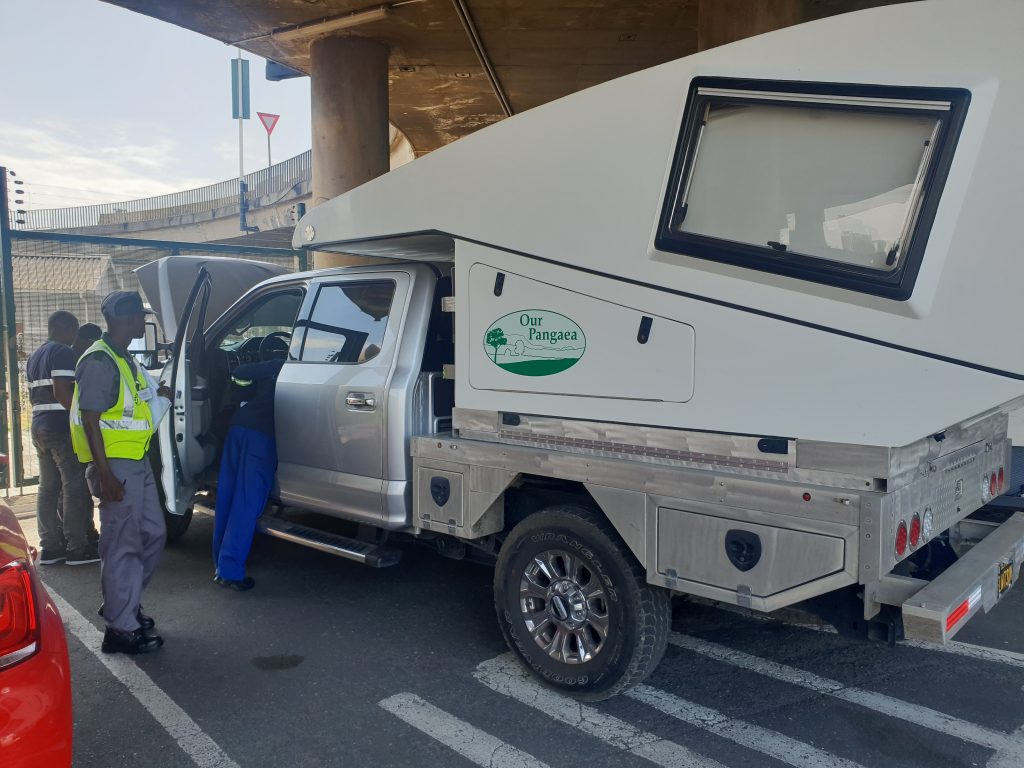
The port authorities had a good last look at Tramp before releasing him – probably some of the search was just curiosity!
In the meantime we had some free time to explore Durban, a large and thriving city surrounded by green rolling hills and long sandy beaches, and get an introductory taste of what was to come over the next three months. And our first impressions were generally positive – yes, the city looked a little tired from some angles but the people were friendly, the beaches were fabulous, the food fun and we didn’t need to pull out our Zulu phrase book once. All good!
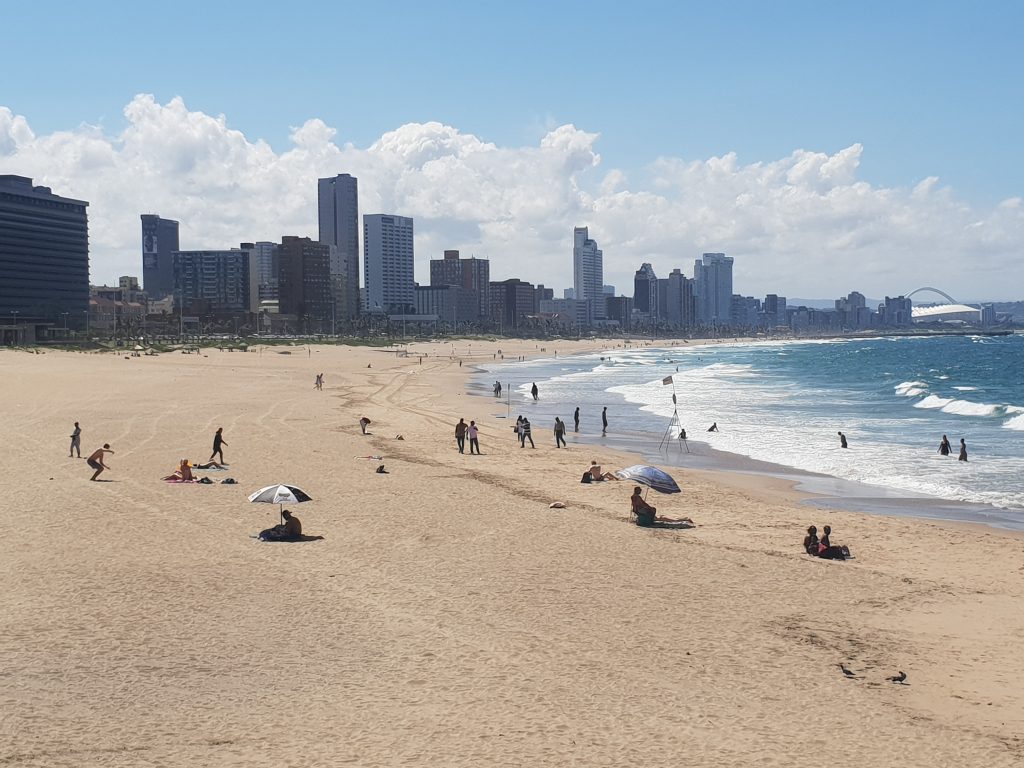
Plenty of gorgeous beaches in Durban but the cool thing is the city is built right up against the beach
One day we went down to the beach area and enjoyed a stroll along the sand and out on a couple of the long piers where we could watch surfers catch the big waves and ride right past us. On another day we caught the open-top double decker bus tour of Durban, a trip we’ve enjoyed in many cities. It showed Durban as a bustling port city, rich in colonial and Zulu history, busy city markets and a vibrant life along the beach promenades. The city might not sparkle but it puts on a good show.
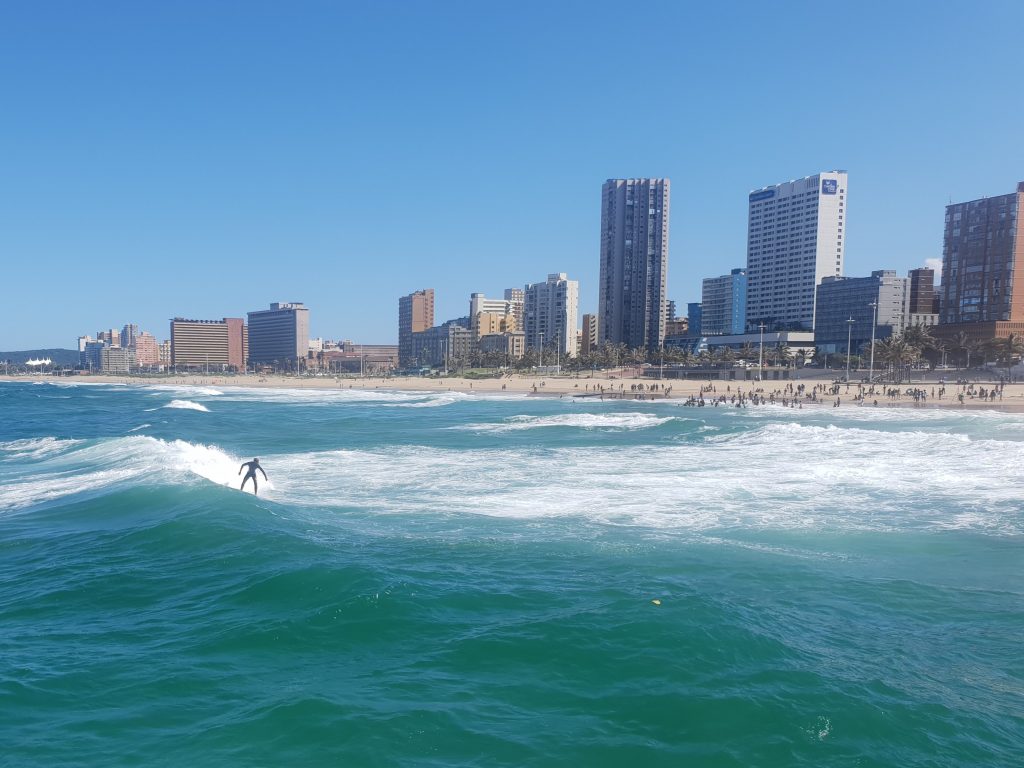
How about this? We walked out on a long pier and watched the surfers go right past us on their way to the beach
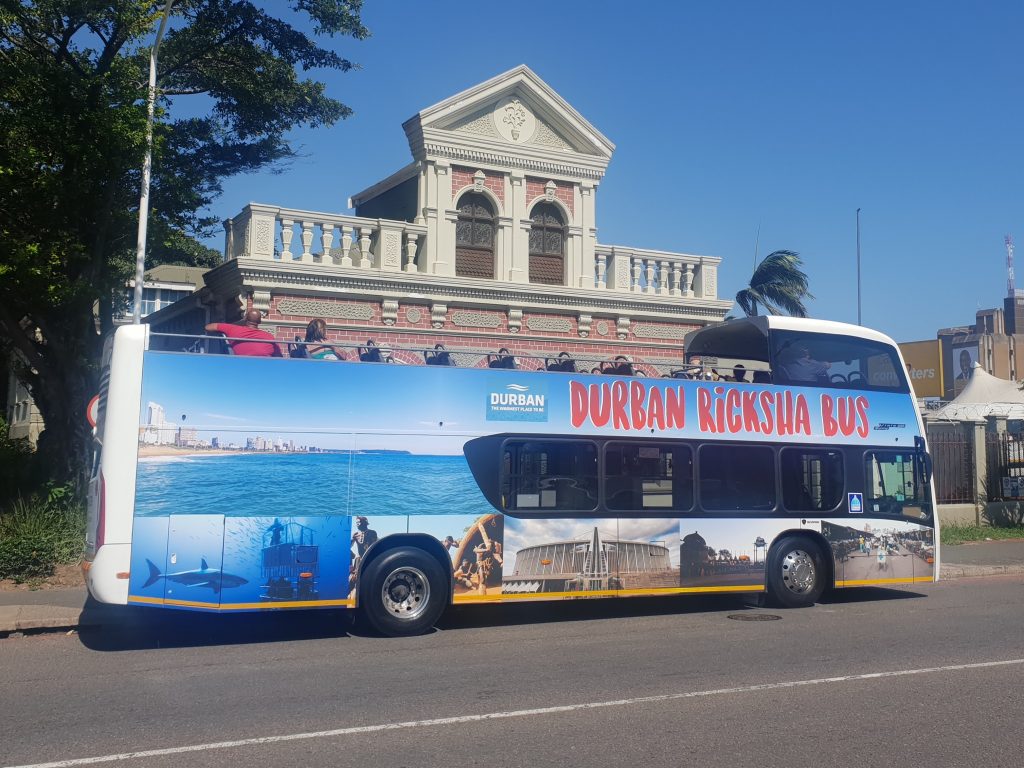
A double decker tourist bus was a great way to see more of Durban but the blazing sun was punishing on the top deck
While we enjoyed our summer months in Australia we put together a plan for exploring southern Africa that would cover the key places we wanted to visit within our somewhat limited timeline. We wanted to be back in Sydney by mid-May for the arrival of our second grandchild – how exciting! – so we knew we wouldn’t be able to explore every nook and cranny of the nine countries that make up southern Africa. But never mind, we were going to do the best we could and put a heavy emphasis on exploring national parks, game reserves and the other natural wonders of these countries.
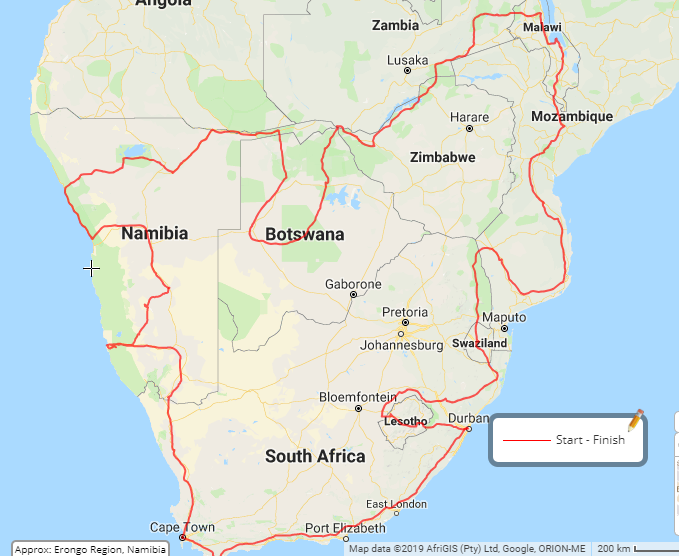
This is our rough plan, moving counter-clockwise from Durban up into Mozambique, then Malawi, Zambia, Zimbabwe, Botswana, Namibia and back into South Africa. But it’s all subject to change – we’re flexible!
Tramp survived his ocean journey a bit better than we survived waiting for him but we finally drove off after restocking his tanks and his fridge. We immediately felt back in the travel zone again, sitting high in Tramp, admiring the scenery, watching the people, absorbing the fabulous experience. Driving in all the countries in southern Africa will have the extra dimension of driving on the left hand side of the road – Aussie style – with a left hand drive car – American style. That means I’m sitting on the outside of the road, rather than the inside, and Julie has to pay for all the road tolls and talk to the policemen. Perfect.
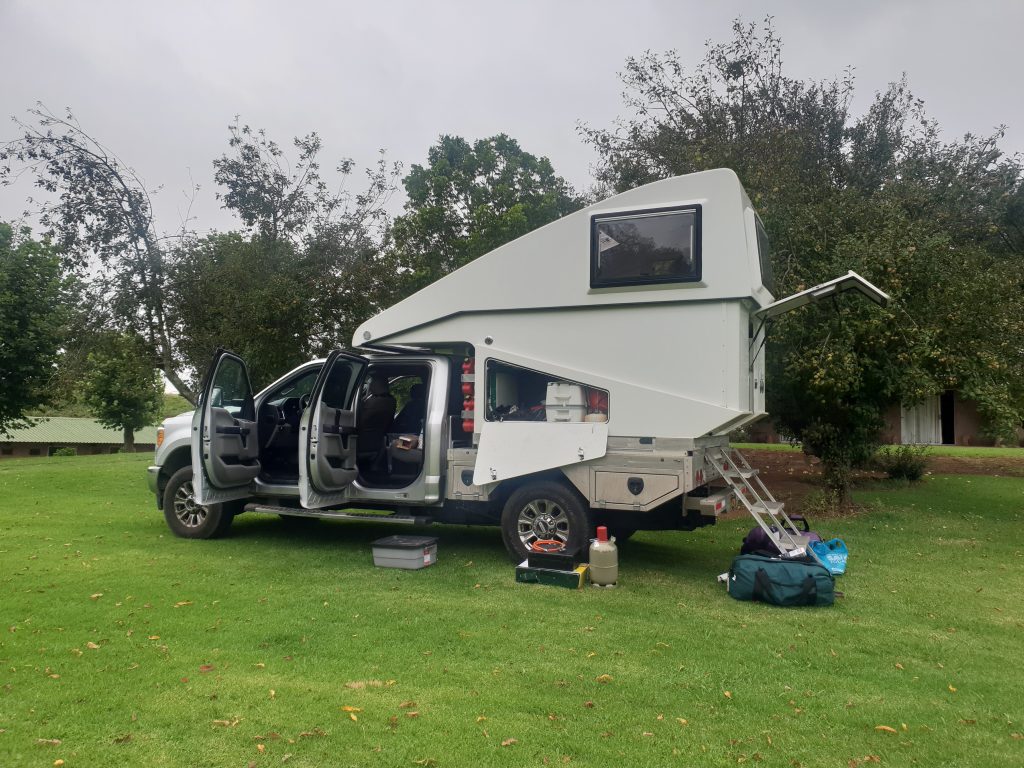
Our first night’s camp was in a farmer’s apple orchard and we used the time to continue cleaning, repacking, sorting and maintenance chores to get our home on wheels in top order
We drove up into the mountains that lie northwest of Durban, winding our way to over 1,300 metres (about 4,300 feet). Here the hot Durban summer was replaced by a cool foggy drizzle and we camped at a farm in their small apple orchard near a herd of goats and a small dam featuring new birdlife. Absolute bliss, it was great to be back on the road again.
Our goal for the next couple of days was to explore the Drakensberg National Park, famous for its dramatic mountain range, and pass into the small country of Lesotho which is completely surrounded by its big brother South Africa. Due to the jagged and remote mountains the national park is not easy to see and we chose to first visit the Lotheni section in the southern part of the park. As we weaved our way up the mountain, frequently delayed by herds of handsome goats lolling in our way, the paved road suddenly ended and a rough single lane dirt track took us the rest of the way along the fast flowing Lotheni River up to the park boundary. The peaks soared all around and there was hardly a tree in sight – the mountains were rendered in jagged rocks and vertical escarpments while covered in deep green grass wherever it could catch hold.
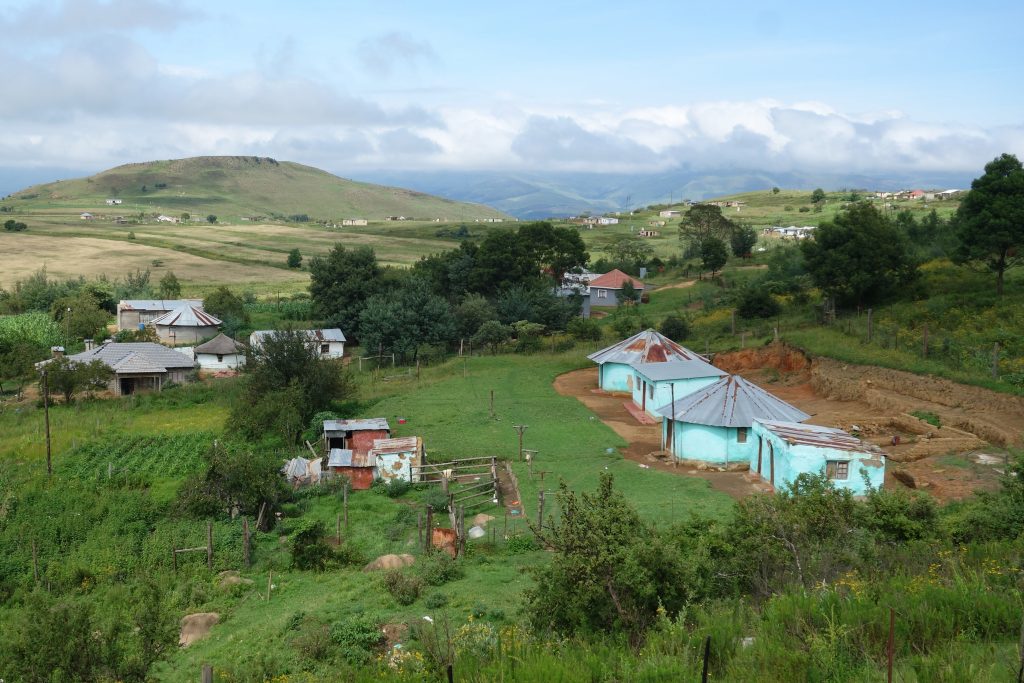
The countryside was green and the local communities featured many buildings – including the round rondovals – in each family group
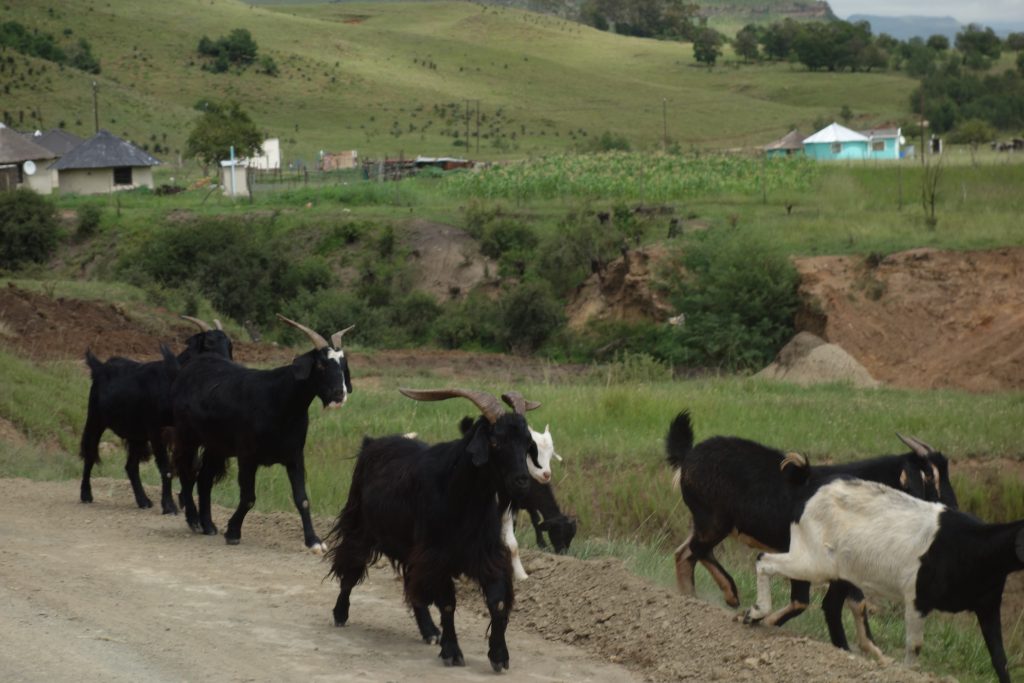
We’ve never seen so many goats as we saw on the drive up into the Drakensberg mountains – and most of them were on our road
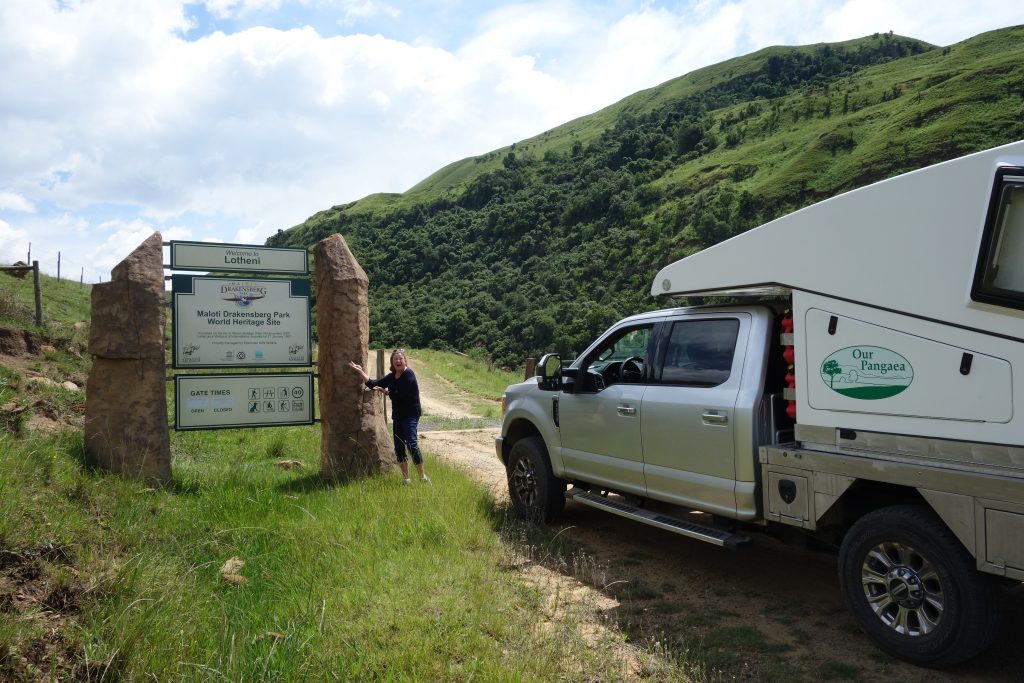
The boundary to the Drakensberg National Park and UNESCO World Heritage area – and then the real fun began!
Under threatening grey skies we headed off on the Emadundwini Trail, an approximately 12 km track that was said to be the pick of the trails in this section of the park. And did it deliver!
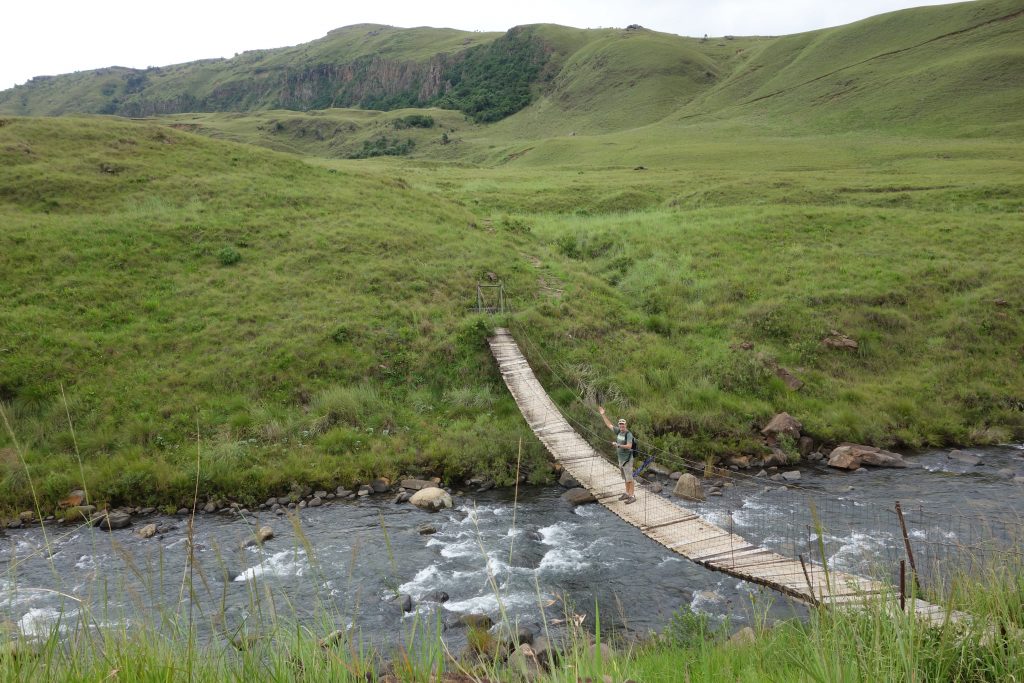
This 30 year old suspension bridge was the only one for the day – the rest of the crossings we had to sort out ourselves
Because it was the end of the rainy season the streams were up and the grass that covered the slopes was tall and thick, in some places completely hiding the underused trail. We were cooled by a constant drizzle with ominous thunder echoing off the mountains and lightning flashing up ahead. We followed streams upward, precariously crossing them back and forth, climbing up amongst the protea trees, gaining more and more spectacular views of the dramatic mountains all around us and marvelling at the deep valley below. We were in heaven.
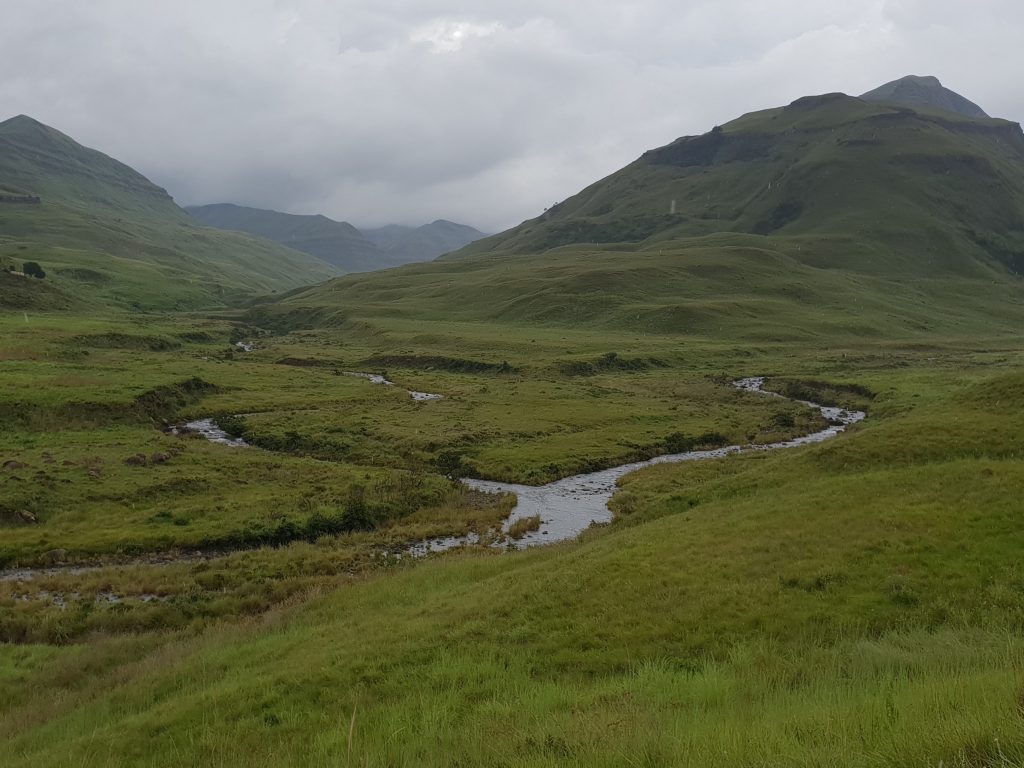
As we moved upstream the Lotheni River split into many smaller streams that ran between the mountains above us
But this is Africa and that means wild game. We knew the park featured herds of elands, a large antelope-type animal with tan shades and stylist straight horns, as well as many other critters. We climbed higher and higher, spotting eland hoof prints and skat on our trails but nothing more. And then up ahead on the slope opposite us there ranged a herd of about 15 elands traversing the steep slope, paying no attention to us. This was a magic moment – our first wild African game, and not even in a game reserve. Yes, of course we expect to see all the famous African game much closer and more frequently but, hey, these were our first and you always remember your first.
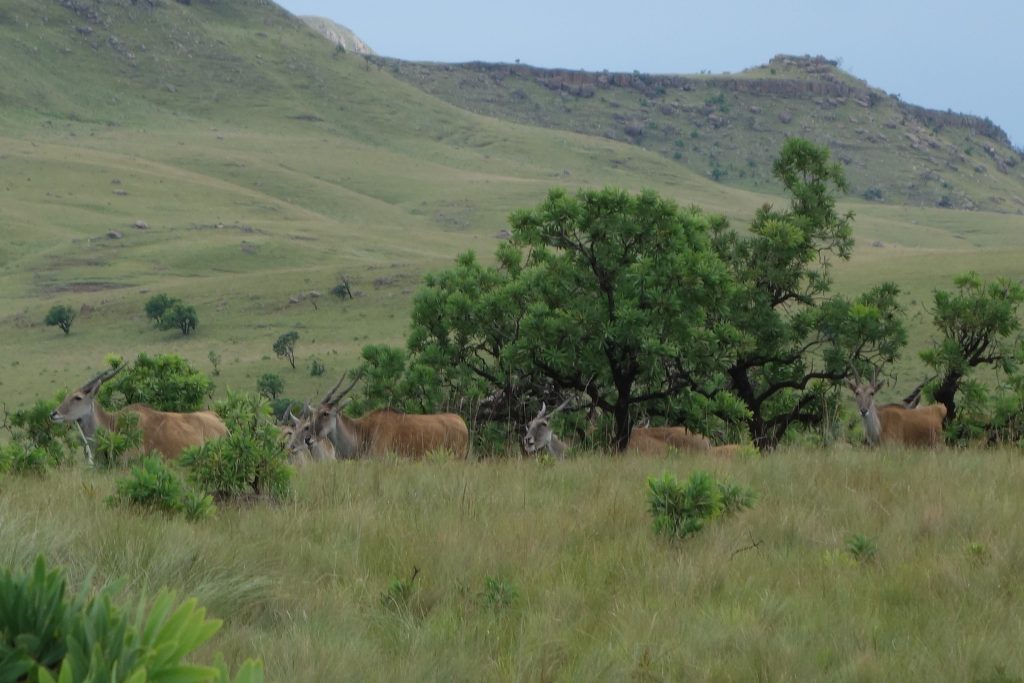
We actually saw two herds – the second cut across our path, watched us for a while and then moved back across. Magic stuff!
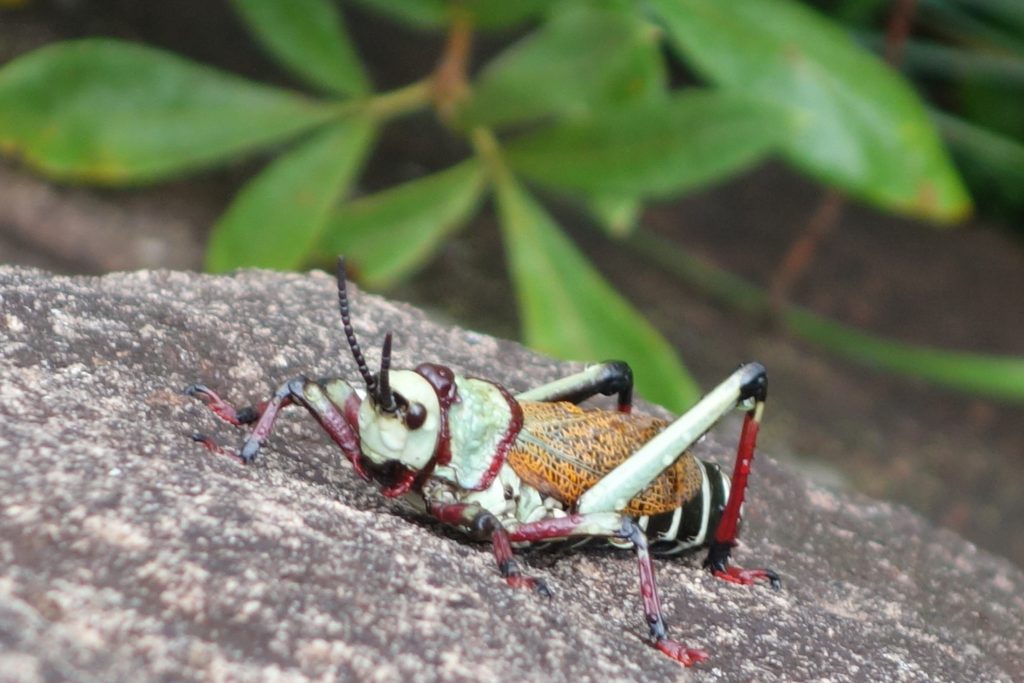
South Africans take their grass hoppers very seriously – we saw a few varieties but this amazing creature was our favourite
We cut across the base of a number of majestic rocky mountains, including one descriptively called Sheba’s Breasts, at one stage having to cut through a thick jungle to avoid a deep ravine. We heard the baboons warning their mates of our arrival and saw leopard skat on the side of our trail. The rain jackets kept going on and off, the cameras kept clicking and our necks were sore from twisting around to take in these spectacular views.
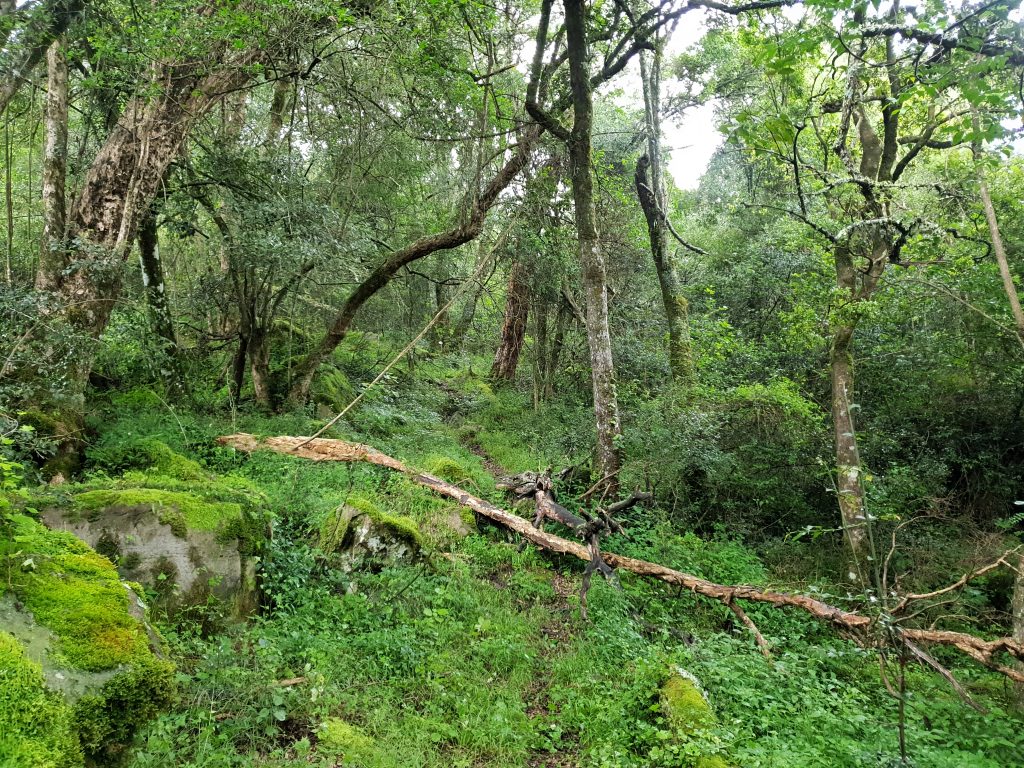
The trail took us through a deep and dark jungle, a little spooky with the baboons calling and leopards potentially lurking
Eventually we popped out on vast open grassy plains, called velds in these parts, frequently losing the trail in the tall grass, worried about snakes, leopards and velociraptors, fighting the light as the day waned, making our long way back to Tramp way down in the valley below. In a strengthening rain featuring more dramatic thunder and lightning, with tired legs and a wondrous glow we returned to Tramp and drove to the nearby campsite where we set up in the dark. It was the end of a fabulous day, possibly one of our best in our Follow the Sun journey, and a great adventure in our first week in Africa.
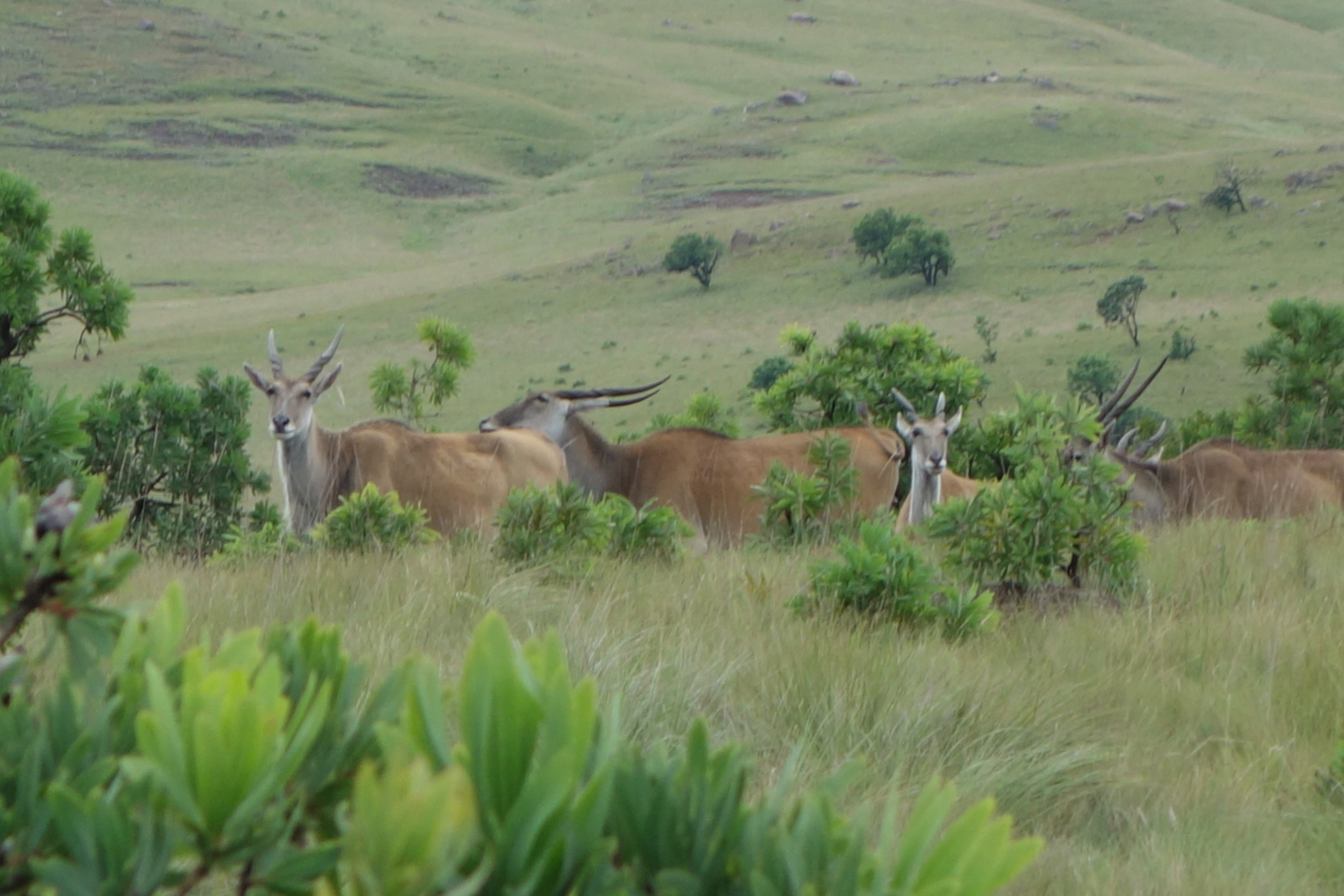














Welcome back. Lovely to be following your tales again.
Eland I could handle but leopard maybe not so much.
Please stay safe and have a fantastic adventure.
Xoxo
Hi Anne and Steve, it’s all wonderful and different and exciting down here in South Africa. Julie is looking out for the lions and I’m looking out for new beers. All good! Cheers, Bill